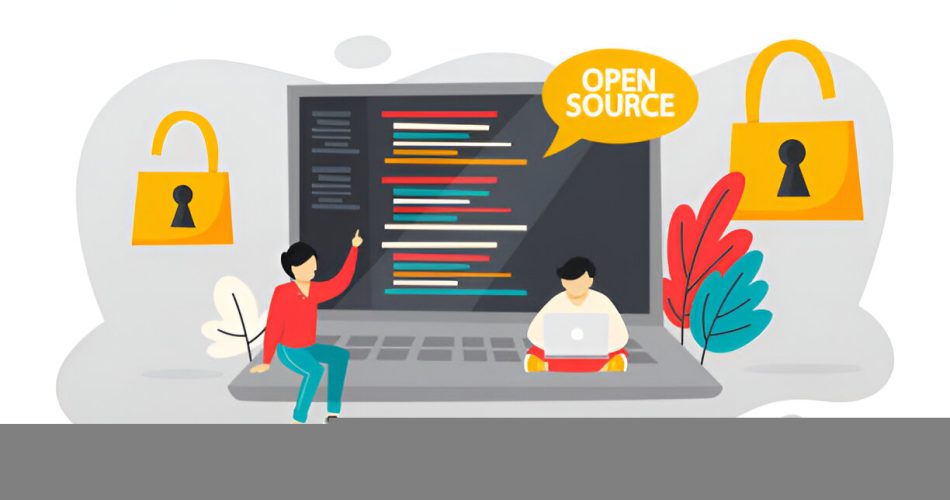The world of technology has undergone a quiet but powerful revolution over the past two decades. At the center of it stands open source software—free to use, modify, and distribute. Once seen as an underdog compared to proprietary solutions, open source is now a driving force behind innovation, powering everything from smartphones and servers to artificial intelligence and cloud infrastructure.
So why is open source software dominating the tech world in 2025? Let’s explore the reasons behind this remarkable shift.
1. Cost Efficiency and Accessibility
One of the biggest advantages of open source software is that it’s often free to use. This removes financial barriers for startups, developers, and educational institutions, allowing them to build and innovate without massive upfront costs. For businesses, it means significant savings in licensing fees without sacrificing quality.
2. Flexibility and Customization
Open source software gives developers full access to the source code, enabling them to modify, optimize, or tailor it to meet specific needs. This level of flexibility is often unavailable in closed, proprietary systems and is particularly valuable for organizations with unique technical requirements.
3. Faster Innovation and Collaboration
With global communities constantly contributing to open source projects, innovation happens faster. Developers can build on each other’s work, submit patches, and add features more rapidly than traditional corporate development cycles. This crowd-powered approach leads to robust, up-to-date, and innovative software.
Popular platforms like GitHub and GitLab have accelerated this by making it easier to collaborate on projects across borders and time zones.
4. Security Through Transparency
Ironically, one of the biggest concerns about open source software—its open code—is also its strength. With thousands of developers reviewing code, vulnerabilities are often spotted and fixed faster than in proprietary software. Transparency ensures accountability, while a large user base provides real-time testing and feedback.
5. Powering the Internet and Cloud
The backbone of the modern internet and cloud computing is built on open source. Key tools like:
-
Linux (operating systems)
-
Apache/Nginx (web servers)
-
Kubernetes & Docker (containerization)
-
MySQL & PostgreSQL (databases)
…all fall under the open source umbrella. Tech giants like Google, Amazon, and Meta not only use open source tools but also actively contribute to them, further cementing their importance.
6. Support from Tech Giants
The open source movement has received major validation from corporations. Companies like Microsoft, IBM, Google, and Red Hat now invest heavily in open source communities. Microsoft, once critical of open source, now owns GitHub and contributes to projects like VS Code and .NET Core.
This corporate backing provides funding, resources, and credibility—ensuring long-term sustainability for open source development.
7. Vendor Independence
Businesses prefer not to be locked into a single vendor’s ecosystem, which can restrict flexibility and increase costs over time. Open source software offers the freedom to migrate, scale, or modify systems without being tied to a proprietary solution or roadmap.
8. Thriving Developer Ecosystem
Developers love open source. It provides opportunities to:
-
Learn new skills
-
Build public portfolios
-
Contribute to meaningful projects
-
Join a global community
This developer-first mindset has made open source a breeding ground for talent and innovation.
9. Better Integration and Interoperability
Open source software is often designed to integrate well with other platforms, both open and closed. APIs, plugins, and open standards make it easier to build flexible, interoperable systems that suit diverse business environments.
10. Accelerating Emerging Tech
Open source is at the forefront of emerging technologies like artificial intelligence, blockchain, and cybersecurity. Tools like TensorFlow (AI), Hyperledger (blockchain), and Wireshark (network analysis) have become industry standards—driven by community collaboration and continuous iteration.
Final Thoughts
Open source software is no longer an alternative—it’s the foundation of modern technology. Its rise is fueled by community, transparency, and a relentless drive for better, faster, and more ethical innovation. As more organizations embrace digital transformation, the dominance of open source in the tech world is only expected to grow.
For developers, businesses, and governments alike, open source represents more than just code—it’s a philosophy of openness, freedom, and collective progress.
